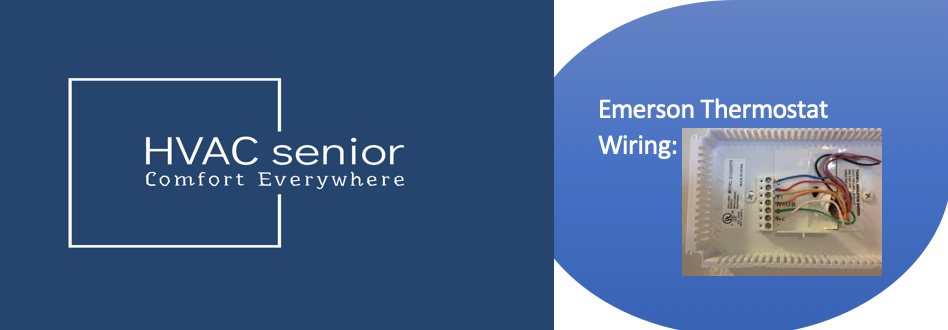When it comes to having a cool, dry, and energy-efficient attic, few parts are as critical as the ridge vent. It’s a quiet but formidable element that allows your roof to breathe — safeguarding your home from moisture accumulation, mold, and early roof deterioration. Whether you’re a homeowner, contractor, or DIY enthusiast, understanding how roof ridge vents work and how to install them can make a huge difference in your roof’s lifespan and your home’s comfort.
In this comprehensive guide, we’ll explain what a ridge vent is, how it functions, the benefits, and exactly how to install a ridge vent on different roof types, including metal roof ridge vents.
What Is a Ridge Vent?
A ridge vent is an automatic ventilation system along the roof peak (ridge) of a pitched roof. Its main function is to offer an avenue for warm, moist air to escape from the attic and let cool air into the attic via soffit or eave vents.
Another way to put it, a ridge vent roof allows your attic to “breathe.” By maintaining air circulation, temperature summertime heat gain and wintertime condensation are prevented.
So, what is a roof ridge vent? It’s one long vent that runs the whole length of your roof’s ridge line, usually shingled or capped with a metal cap, flowing smoothly with your roofing material.
Why Ridge Vents Matter
Few people understand just how critical ventilation is to the well-being of a roof. A properly installed roof ridge vent will deliver even airflow, which has several benefits:
1. Avoids Moisture Damage
Without ventilation, indoor warm air rises and drips on the roof decking. This ultimately results in mold, rot, and damage to the insulation. A ridge vent roof releases this enclosed air, drying out the attic.
2. Improves Energy Efficiency
Summer heat buildup is minimized. Ridge vents enable the HVAC system to do its job more efficiently. This can save 10–15% on cooling bills.
3. Extends Roof Lifespan
Additional heat and humidity are two of roofing materials’ worst enemies. With a roof ridge vent, temperatures stay in equilibrium, reducing shingle and decking wear and tear.
4. Stays Air Pressure Balanced
When combined with soffit vents, ridge vents create a balanced air system — cool air comes in at the bottom, warm air goes out at the top — maintaining attics at their proper temperature year-round.
Types of Ridge Vents
There are several ridge vents, each with its own strength based on the type of roof and the climate.
1. Shingle-Over Ridge Vents
These are the most common type of ridge vent roof installations. The vent material is placed along the ridge and finished off with shingles for a clean, seamless look.
2. Metal Roof Ridge Vents
For standing-seam or corrugated metal roof types, standing-seam or corrugated metal ridge vents are suitable. They consist of durable steel or aluminum and are preformed to fit flawlessly with corrugated or standing-seam metal panels.
3. Rolled Ridge Vents
They are delivered in the form of long rolls and are simple to install. They are flexible, hence work on asphalt shingle roofs.
4. Individual Ridge Caps
Individual vented caps appear on certain roofs, mainly shake or tile. They are used in place of continuous ridge vents. While less efficient, they are indeed a type of ventilation.
How Does a Ridge Vent Work?
The ridge vent roof is based on the concept of natural convection. The hot air in the attic drifts towards the top — the ridge. Hot, damp air is allowed to exit through the ridge vent while colder air enters by way of the soffit vents along the perimeter of the roof.
This constant flow of air prevents moisture buildup and maintains attic temperatures moderate. A well-planned ventilation system achieves continuous air exchange without mechanical fans.
Also read: Gable Vents
How to Install Ridge Vent: Step-by-Step Guide
It is important to know how to install ridge vent correctly to achieve proper ventilation. Even the most superior vents will not work if installed improperly.
Step 1: Prepare the Ridge
Measure the length of the ridge and mark the location for the vent.
Cut a ¾-inch slot on both sides of the ridge board using a circular saw, leaving approximately 6 inches uncut at both ends.
Step 2: Clear Debris
Clean dust, sawdust, and loose material from the cut to allow free airflow.
Step 3: Install the Vent Material
Place the ridge vent flat over the slot, centered and held flat against the roof surface. Use the manufacturer-recommended fasteners (usually roofing screws or nails).
Step 4: Secure and Seal
For shingle-over ridge vents, place shingles over the vent, leaving vent openings unobstructed for ventilation. For metal roof ridge vents, install ridge caps or flashing over the vent to seal the vent, sealing all seams well to prevent leaks.
Step 5: Check for Balance
Ensure soffit vents stay open — a ridge vent roof works only if air from soffits can flow unobstructed to the ridge.
Common Mistakes While Installing Ridge Vents
Despite his or her vast experience, even the best roofer makes some error that detracts from the vent’s performance. These are the most frequent mistakes:
- Obstructing Soffit Vents: Without any incoming airflow, ridge vents do not work.
- Wrong Slot Size: The slot is too tight, impeding airflow; or too large, making the ridge weak.
- Bad Sealing: Leaks form when metal roof ridge vents are not sealed at joints.
- Insufficient Ridge Coverage: Put the vent fully across the ridge for best results.
- Wrong Combination of Systems: Do not combine ridge vents with other exhaust systems like gable fans — it will destabilize airflow.
Benefits of a Roof Ridge Vent System
Here’s why ridge vent investment is the best roofing choice:
1. Year-Round Ventilation
Roofs with ridge vents vent passively, continuously operating without energy consumption or moving parts.
2. Enhanced Home Comfort
Fair airflow keeps your attic cool in the summer and stops winter condensation.
3. Better Roof Performance
A well-ventilated roof avoids ice dams, shingle curling, and wood rot — all typical problems in poorly ventilated houses.
4. Aesthetics
Since ridge vents are low-profile and generally hidden beneath shingles or caps, they match roof design ideally.
Ridge Vent Compared to Other Roof Ventilation Systems
| Feature | Ridge Vent | Gable Vent | Roof Turbine | Power Attic Fan |
| Airflow Efficiency | Excellent (continuous flow) | Moderate | High | High (mechanical) |
| Energy Use | None (passive) | None | Wind dependent | Uses electricity |
| Aesthetics | Nearly invisible | Visible on sides | Visible on roof | Visible and noisy |
| Maintenance | Low | Low | Moderate | High |
| Cost | Moderate | Low | Moderate | High |
Clearly, a roof ridge vent represents the most acceptable compromise of efficiency, appearance, and cost.
Also read: Soffit vent.
Metal Roof Ridge Vents: Special Considerations
When using a metal roof ridge vent, design and installation are slightly different from that of asphalt shingle roofs.
1. Material Compatibility
Use aluminum or galvanized steel vents to match the quality of your roof and prevent corrosion.
2. Weatherproofing
Metal roof ridge vents require special foam closure strips or gaskets to keep rain, snow, and insects out without hindering airflow.
3. Expansion and Contraction
Metal roofs stretch and shrink with temperature changes. The vent system must be able to move with this without breaking the seal.
4. Appearance
Because of their smooth configuration, metal roof ridge vents have a tendency to enhance the appearance of the roof as a whole, especially on modern or commercial buildings.
How to Know If Your Roof Needs a Ridge Vent
You may need a ridge vent roof if you find yourself experiencing:
- Severe summer heat in the attic
- Mold and mildew odors
- Ice dams during winter
- Curling shingles or roof discoloration
- Condensation on roof decking or rafters
If these signs appear, adding a roof ridge vent would hugely improve ventilation and reduce roof future problems.
Ridge Vent Maintenance Tips
Although ridge vents don’t require maintenance, the following easy checks can assure them to keep working optimally:
- Inspect the ridge line annually for damage or blockage.
- Remove leaves, nests, or debris that could restrict airflow.
- Check seals and fasteners after severe weather.
- Ensure attic insulation does not block soffit vents.
Regular maintenance keeps your ridge vent roof running smoothly for decades.
How Long Do Ridge Vents Last?
A well-installed roof ridge vent will last just as long as your roof system — typically 20–50 years, depending on the material.
Metal roof ridge vents typically outlast the roof itself because of how strong and corrosion-resistant they are.
Final Thoughts: Why Every Roof Needs a Ridge Vent
A ridge vent is not just an afterthought — it’s a critical part of a healthy roof. By enabling constant airflow through your attic, ridge vents prevent moisture damage, save energy, and add years to your roof’s lifespan.
Whether you’re putting up a new ridge vent roof or remodeling an older home, spending money on good ventilation will cost you thousands less in the long run. And if you’re dealing with a metal roof, a metal roof ridge vent provides efficiency without sacrificing style.
Now that you have learned about a ridge vent, what a roof ridge vent does, and how to install ridge vent correctly, you’re ready to make an informed decision for a safer, more energy-efficient home.
Key Takeaways
- A ridge vent allows hot, moist air to escape from your attic.
- Equal intake and exhaust airflow is required for correct installation.
- Metal roof ridge vents provide strength and durability.
- Periodic inspection ensures long-term performance.
- Pro.per roof ventilation can extend the life of your roof and enhance interior comfort.









